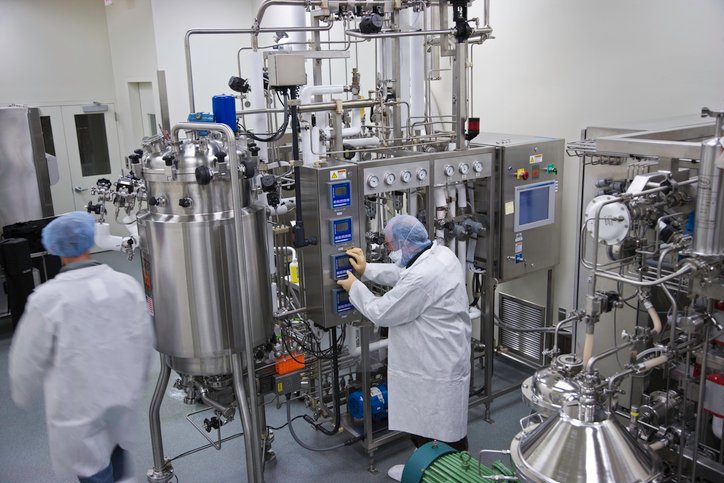Stanford Medicine scientists investigating the neurological basis of autism spectrum disorder (ASD) have found that hyperactivity in a specific brain region could drive behaviors commonly associated with the disorder. Using the Cntnap2 knockout mouse model, the researchers, led by John Huguenard, PhD, professor of neurology and neurological sciences, identified the reticular thalamic nucleus (RT)—which serves as a gatekeeper of sensory information between the thalamus and cortex—as a potential target for treatments.
The team showed that treating the autism model mice using drugs that suppress this area of the brain—and which are being studied for the potential treatment of epilepsy—reversed symptoms similar to those of autism. This includes susceptibility to seizures, heightened sensitivity to stimulus, increased motor activity, repetitive behaviors, and decreased social interactions.
The findings highlight where the processes underlying autism spectrum disorders and epilepsy may overlap in the brain and why they often occur in the same patients.
Senior author Huguenard, together with lead author Sung-Soo Jang, PhD, a postdoctoral scholar in neurology and neurological sciences, and colleagues, reported on their findings in Science Advances, in a paper titled “Reticular thalamic hyperexcitability drives autism spectrum disorder behaviors in the Cntnap2 model of autism.” In their paper the authors concluded, “Our findings provide the evidence of RT hyperexcitability contributing to ASD-related behaviors and highlight the RT as a promising therapeutic target for managing ASD.”
“Autism spectrum disorders are common neurodevelopmental conditions characterized by social impairments, repetitive behaviors, and comorbidities such as intellectual disability, hyperactivity, anxiety, and epilepsy,” the authors wrote. The neural circuitry connecting the thalamus and cortex has been implicated in autism in both humans and animal models, but the role of the reticular thalamic nucleus hasn’t been clear.
“Notably, individuals with ASD often exhibit sensory processing abnormalities, sleep disturbances, and seizures, implicating a potential role of the thalamocortical (TC) circuit, a key system governing these functions,” the investigators stated. However, they further noted, “Although thalamocortical circuit dysfunction has been implicated in these symptoms, its precise roles in ASD pathophysiology remain poorly understood.”
For their newly reported study the researchers turned to Cntnap2 knockout (Cntnap2-/-) mice, which are genetically modified to model autism. “Contactin-associated protein–like 2 (Cntnap2) is strongly implicated in ASD, and Cntnap2-/- mice exhibit a range of ASD-related behaviors, including hyperactivity, epileptic seizures, disrupted sleep architecture, impaired sensory coding, and deficits in spatial discrimination,” the scientists explained.
The team recorded the neural activity of the reticular thalamic nucleus in the mice while observing the animals’ behavior. They found that this brain region showed elevated activity when the animals encountered stimuli such as a light or an air puff, as well as during social interactions. The brain region also showed bursts of spontaneous activity, causing seizures.
“Cntnap2-/- mice displayed increased seizure susceptibility, locomotor activity, and repetitive behaviors,” they noted. “Electrophysiological recordings revealed enhanced intrathalamic oscillations and burst firing in RT neurons, accompanied by elevated T-type calcium currents.”
Epilepsy is much more prevalent in people with autism than in the general population—30% versus one percent—though the mechanisms are not well understood. “Previous studies have reported a comorbidity between ASD, hyperactivity, and a higher prevalence of seizures in both patients and animal models,” the scientists wrote. Recognizing this connection, they tested in their rodent model an experimental seizure drug, Z944—“a well-established T-type calcium channel blocker known to inhibit burst firing in RT neurons and reduce absence seizures”—and found that it reversed behavioral deficits.
With a different experimental treatment known as DREADD-based neuromodulation, which genetically modifies neurons to respond to designer drugs, the researchers could suppress overactivity in the reticular thalamic nucleus and reverse behavioral deficits in the autism mouse model.
“Consistent with the effects of Z944, suppression of RT activity using an inhibitory DREADD approach rescued ASD-related pathological behaviors in Cntnap2-/- mice,” they wrote. The scientists demonstrated that they could also induce these behavioral deficits in normal (Cntnap2+/+) mice by ramping up activity in the reticular thalamic nucleus. “Conversely, excitatory DREADD-mediated activation of RT neurons in Cntnap2+/+ mice induced deficits in social preference and increased grooming behaviors, demonstrating a causal role of RT neurons in driving ASD-related behaviors,” they reported.
The new findings highlight the reticular thalamic nucleus as a novel target for the treatment of autism spectrum disorders. The team says that their rescue experiments suggest that both Z944-mediated pharmacological inhibition and DREADD-based neuromodulation of RT neurons offer “…a powerful and targeted approach to ameliorate ASD-related behaviors, highlighting a promising strategy for the precision treatment of ASD.”
The post Autism Symptoms Reversed in Mice Using Epilepsy Drug Candidate appeared first on GEN – Genetic Engineering and Biotechnology News.



